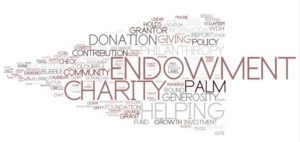
As arts organizations seek to manage the financial challenges they face during the current pandemic, the place an endowment holds in their financial picture is gaining attention.
Long-Term Asset
Foundations are being called upon to use endowments ‘more actively’, and provide much needed cash flow and income to their beneficiary organizations. It has long been a successful model that an endowment be considered as a long term asset. The stability of a stable, recurring annual income is important to an organization’s day to day operations and financial planning. The perspective of long term investing, disbursing a portion of annual returns ( generally 3 to 5%), allows a fund to grow over time, protect that annual income against inflation and provide for increased cash flow over time. It is a model that serves the arts community through the Ontario Arts Foundation well.
Source of Additional Income
The Ontario Arts Foundation has tried to address this by recognizing the need for financial support (which is now), and deciding to pay out additional income to our arts organizations in addition to the annual payout. The Board felt comfortable that the positive growth in endowment portfolio’s over time, leaves the foundation with the ability to increase current support, be confident that we can continue our pattern of stable income over time, and continue to carefully grow for the long term. That translated in May to an additional $1.0 million dollars in operating support for Ontario arts organizations.
Different Endowment Use Perspectives
For a U.S. perspective, this New York Times article shows how U.S. cultural organizations are considering the use of endowment assets more broadly, more creatively in response to current needs.
In Canada, a group of Foundations, through Give5.ca, are encouraging funders in 2020 to increase the level of endowment giving to 5% of assets – traditionally the high end of range of annual payouts. The sector recognizes, that endowments have a strong role for the long-term, but can be adaptable and accessible when shorter-term needs become paramount.
